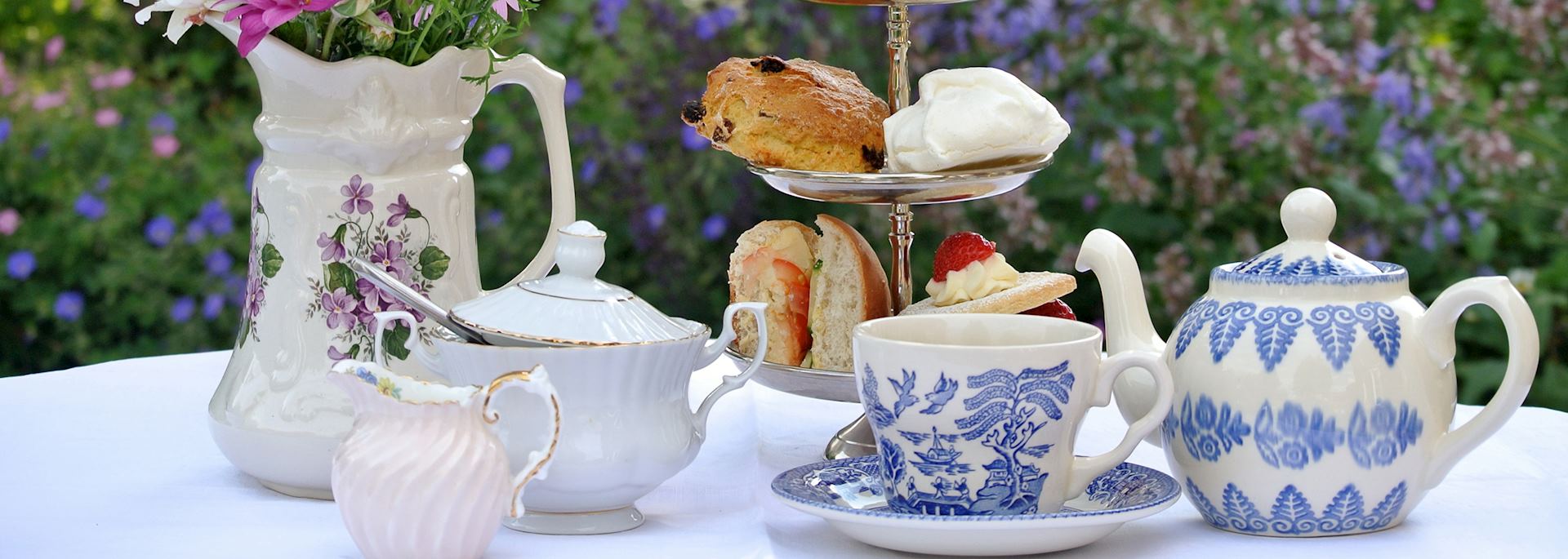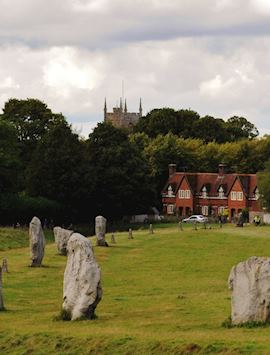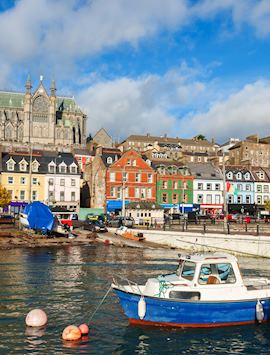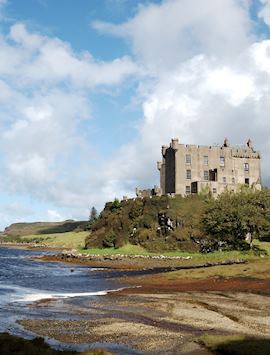By UK specialist Jackie
British and Irish cuisines are unfairly maligned around the world, saddled with the outdated assumption that everything is bland, boiled and boring. Though the reputation may have been justified in the past, the reality in the 21st century is happily very different. Whether you’re looking for traditional fare or the latest offerings from the farm-to-table trend, the UK and Ireland offer a movable feast.
Fish and chips in Oxford
Fish and chips is one of the UK’s signature dishes. Whether you prefer it wrapped in grease-soaked paper from a takeaway shop or served on a wide white plate at a chic gastropub, it’s easy to find. But the place in Oxford where I like to go for this classic meal is so well hidden that you practically need a treasure map.
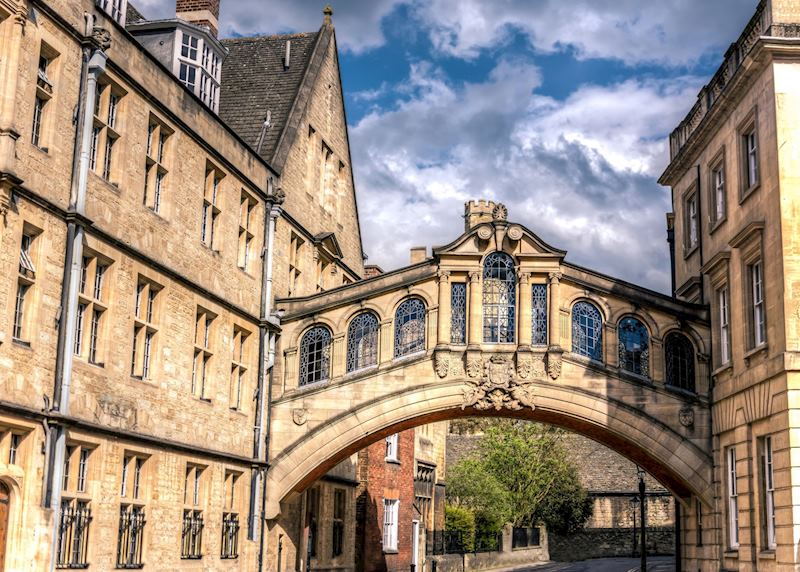
Go under the university’s Bridge of Sighs (an enclosed arched pass over New College Lane). Then turn down Saint Helen’s Passage, an alley that you could mistake for simply a gap between two buildings. Walking down this narrow lane, you may think you have taken a wrong turn and are lost in someone’s back alley, especially as you follow it through several abrupt turns.
Then, suddenly, you step out into a small stone-paved courtyard surrounded by Tudor-style buildings and a low green pub entrance. You’ve reached the Turf Tavern.
The Turf Tavern has been a popular watering hole since the 14th century, when it was known as the Spotted Cow. This is where Bill Clinton failed to inhale during his Oxford days and where fictional detective Inspector Morse often did his thinking and drinking. As a university pub, it has a casual and youthful atmosphere and you can expect to find students here at all times of day and night.
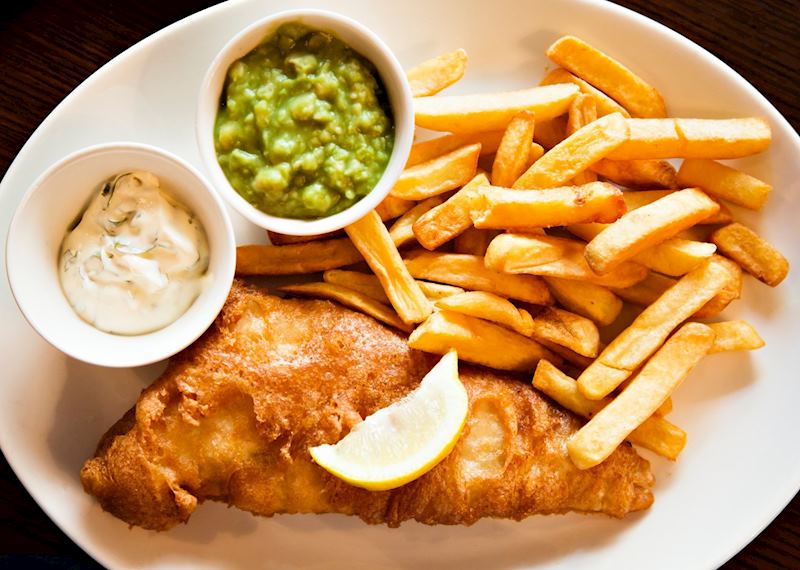
If you’re tall, you may have to duck under the low, dark beams once you’re inside to get to the bar. On a nice day, you can take your food outside to one of the long communal tables and perhaps strike up a conversation with the students at one of the world’s most prestigious universities over a pint.
The chips are triple cooked, rendering them fluffy on the inside and crispy on the outside. My generous piece of cod had been gently spiced, beer-battered and flash fried until flaky-tender in the kitchen that’s visible from the bar. They were served with the usual side of ‘mushy peas’, a slightly salty mash of cooked garden peas.
Seafood in Edinburgh
There are more ways to enjoy the local seafood than just fish and chips. As befits a nation surrounded by water, most of the fine-dining restaurants also feature a wide selection of fresh seafood on their menu. And, thanks to the UK’s many international culinary influences and well-established restaurant culture, you can find the ocean’s bounty prepared in a number of interesting styles.
Fishers in the City is an Edinburgh institution with an eclectic menu that offers not just fish but also mussels, clams, scallops, cockles, prawns and lobster, all of it freshly caught. The menu changes with the seasons and dishes might be inspired by Italian, French, Indian or Asian cuisine. The blue-trimmed restaurant, set on a quiet side street in the New Town, is often busy so be sure to make a reservation. The food is worth the effort.
As a Bostonian, I’m very fond of lobster and will admit that I was a little dubious about eating it anywhere outside New England. But it was a risk that paid off. Served on a wide-rimmed white plate over tender pappardelle, the lobster was delicate and sweet. The large chunks were napped in a silky butter sauce enlivened by a splash of lemon. The helpful sommelier suggested a New Zealand sauvignon blanc to accompany my seafood and it provided a sublime complement to the meal.
Foraging in Ireland
Ireland’s culinary scene has embraced the farm-to-table movement in the past few decades. The island’s chefs have learned to take advantage of its abundance of seafood, meat, dairy and vegetables to create exceptional meals. Most of the menus I saw highlighted the local origins of the food, which was largely organic and sustainably grown.
If you’re adventurous, you can take the concept of local food to a whole new level. On a raw spring day, I met my guide, Oonagh (pronounced ew-na), in the small coastal town of Lahinch. A second-generation forager, she led me on an eye-opening tour from the town down to Galway Bay.
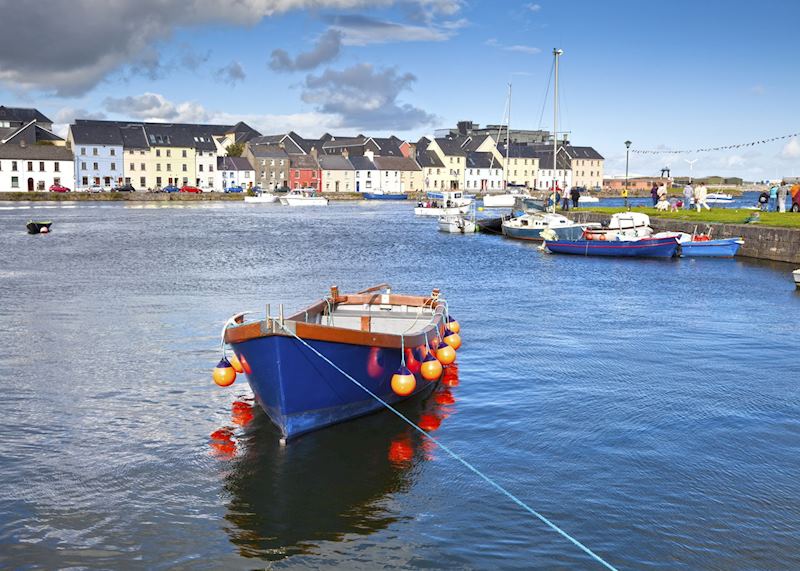
Under her tutelage, the undifferentiated mass of plants growing in the Irish countryside suddenly sprang to life. A clump of weeds alongside the path turned out to be a salad-worth of herbs, including sprigs of delicate thyme and lobe-leafed wild marjoram. A hedge revealed its harvest of lipstick-red hawthorn berries (known as haws). Feathery white flowers exploded with the heady bite of garlic on my tongue.
When we reached the rocky shore, Oonagh scooped up clumps of seaweed from the wet stones. The sea spaghetti she offered me to try was tendrils of briny, tender-crunchy greens that felt slick between my teeth. The pepper dulse — a ruffled purple sea vegetable — had a complex umami taste, almost like mushrooms or anchovies.
We shared a picnic she’d made using foraged ingredients that she’d collected earlier and I dipped the mostly raw foods into ketchup made from haws. The untamed menu, eaten with our chilly bare fingers on the blustery beach, felt like a taste of Ireland’s distant past, when fishermen’s wives foraged for food every day.
Afternoon tea in London
The terminology around the ritual of tea is a bit muddled outside the UK. Afternoon tea is the elegant meal served in many fine hotels and tea shops. The phrase refers to a refined respite in the mid-afternoon during which crust-less sandwiches and exquisite pastries are offered on a multi-tiered platter. The tradition began when wealthy ladies would entertain during calling hours and the hostess served tea and light refreshments on low tables.
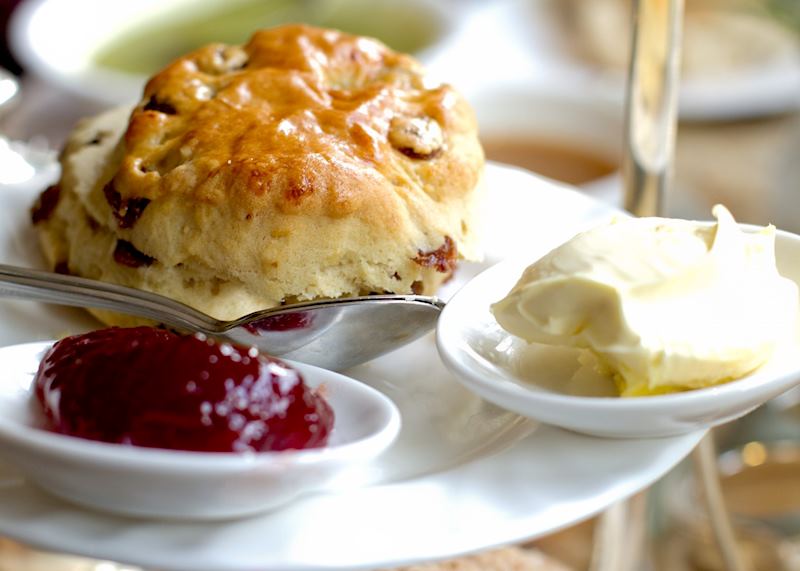
High tea is something quite different — traditionally, it was the last meal of a workman’s day, served on a regular (thus ‘high’) table. However, the phrase ‘high tea’ is so commonly misapplied to the more dainty meal that the language has begun to shift and many of the hotels that cater to foreign visitors have begun to use the phrase.
Though you can enjoy afternoon tea almost anywhere in Britain, I prefer the creativity of the options available in London. Something about the meal inspires the whimsical side of the city’s pastry chefs.
I recently enjoyed an Alice-in-Wonderland-themed tea in the Kensington Hotel. The entire meal was a delight, and included jam-filled scones and egg-and-cress sandwiches. The three-tiered platter was capped with a bright purple top hat and the dessert included an éclair made to look like the White Rabbit.
Many tea rooms in London have also begun offering a more adult version of afternoon tea, with mimosas, champagne or prosecco served alongside the usual Earl Grey.
Sausage rolls at Blenheim Palace
Last time I visited the UK, I was on a mission. I wanted to eat an excellent sausage roll.
These stalwarts of British baking are common throughout the country but they can be sodden, greasy or dry. I wanted to find an exemplary version. Asking around, I expected to hear that I would have to trek out to a small, distant town, where cooks had been making this classic dish for hundreds of years. In fact, I was repeatedly told I should try one of the cafés at a National Trust property.
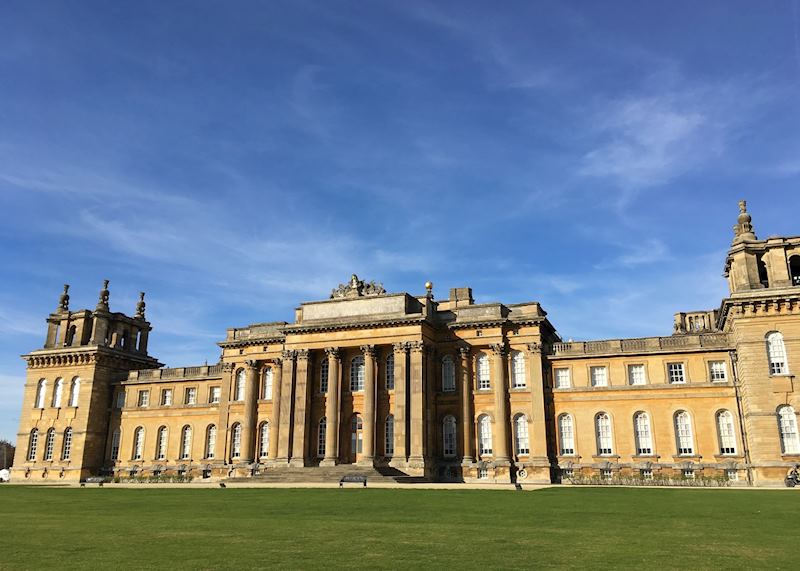
I was frankly confused. In the US, museums and historical houses aren’t known for their food. Instead, we resign ourselves to indifferent institutional food when we visit cultural destinations. But the consensus opinion was so overwhelming that I made sure to try one the next time I visited a historic property, in this case, Blenheim Palace just outside of Oxford.
This estate is still privately owned by the present Duke and Duchess of Marlborough, but its café is emblematic of the quality of food you’ll find when you sit down to eat at any stately home or palace across the UK and Ireland.
The setting wasn’t encouraging — plastic trays and fluorescent lighting in a café attached to the gift shop. But the roll itself was everything I’d dreamed of. The flaky, buttery pastry was shatteringly fragile, concealing a juicy, meaty filling. I ate it along with a bowl of cream of mushroom soup and the smooth and earthy puree made an excellent foil to the rich sausage roll.
Boxty in Dublin
‘Boxty on the griddle, boxty on the pan, if you can't bake boxty, sure you'll never get a man.’ So goes an Irish folk rhyme about a traditional dish that’s making a comeback.
This fluffy potato pancake was considered humble fare until recently, when a resurgence of interest in Irish cuisine gave it new life on menus. And the best example I’ve ever tasted was, appropriately, at the Boxty House.
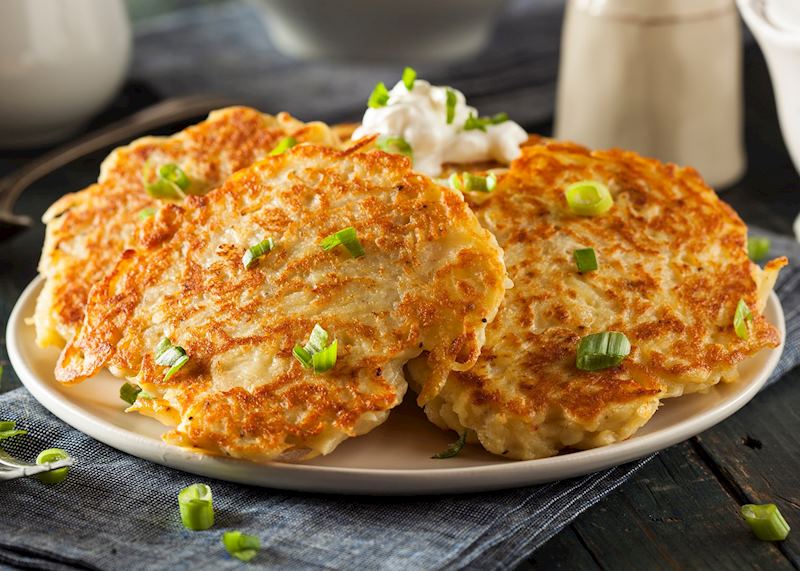
This popular eatery is located in Temple Bar, ¶Ù³Ü²ú±ô¾±²Ô’s stylish quarter. The kitschy-cool decor includes Mason jar lighting and boxes of boxty mix on the wall. The featherweight pancakes are folded over the filling of your choice — I like lamb — and served in an aromatic pool of sauce. The boxty itself was lovely, but the thick, slightly salty sauce simply made the meal. I wiped my plate clean.
Salmon at a picnic lunch in the Scottish Highlands
Salmon is a staple in Scotland, caught in the many rivers that run down and between the peaks of the Highlands. I’ve eaten it across the country in dozens of preparations, but none were as memorable as the salmon that headlined in my picnic lunch in Rothiemurchus.
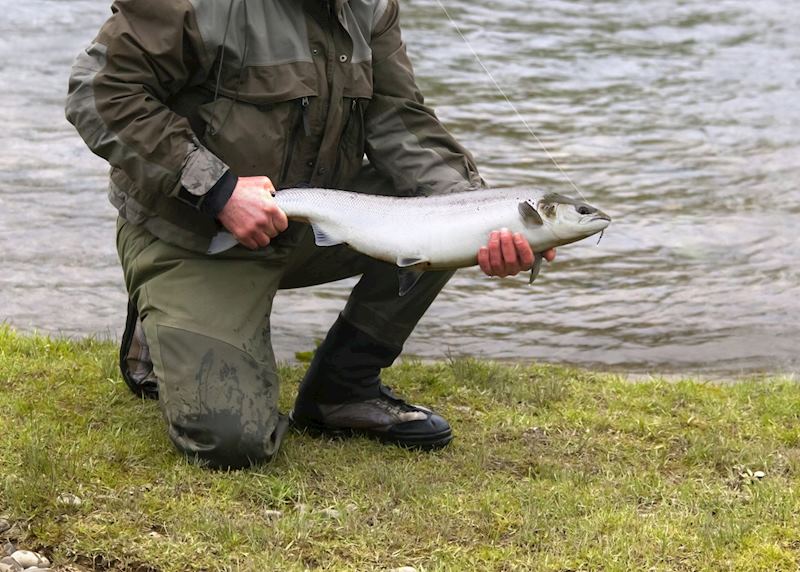
This private estate in the northwest of the Cairngorms National Park preserves a swathe of the Caledonian Forest, the old-growth temperate rainforest of Scotland. I took a jeep tour of the rugged landscape, led by a park ranger who narrated our drive, explaining the wildlife, flora, geology and natural history of this patch of the Highlands. I fed the nearly tame roe deer and we passed hairy Highland cows before we drove up a ridge and parked.
The estate’s private chef had prepared a picnic lunch. The menu included orzo, a salad with cranberries and walnuts, chicken, and locally caught smoked salmon. The pinky-orange fillet was sliced thin and laid out on a bed of ice, served with cream cheese, capers and chopped red onions. Because it was my birthday, he’d included a cake with candles, too.
I don’t know if it was the exceptional freshness of the fish, or the view of the snow-capped mountains in the distance, or even the birthday cake, but that lunch remains my most treasured memory of a meal in the UK.
Starting planning your trip to the UK
Start thinking about your experience. These itineraries are simply suggestions for how you could enjoy some of the same experiences as our specialists. They're just for inspiration, because your trip will be created around your particular tastes.
View All Tours in England